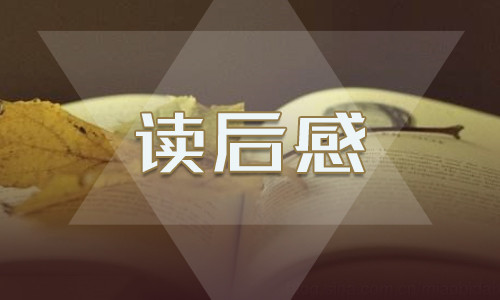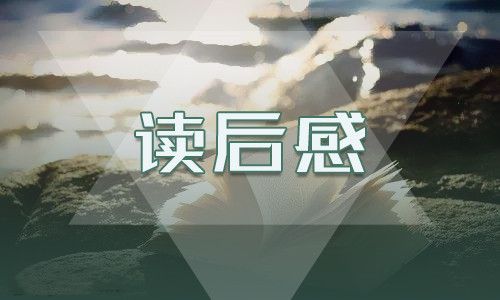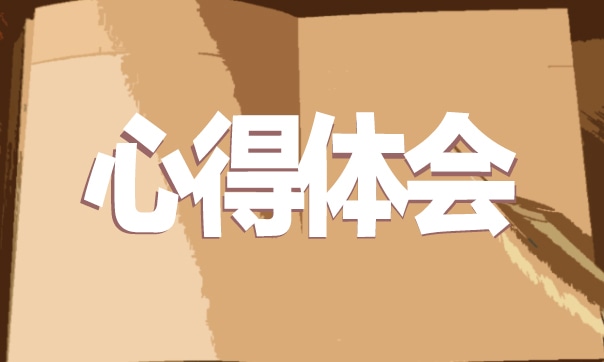In a blog for Ethnography Matters, she writes that more senior men seemed to direct themselves towards the back of the elevator cabins.
She said: ‘In front of them were younger men, and in front of them were women of all ages.’
She also noticed there was a difference in where people directed their gaze half way through the ride.
‘Men watched the monitors, looked in the side mirrors (in one building) to see themselves, and in the door mirrors (of the other building) to also watch others.
‘Women would watch the monitors and avoid eye contact with other users (unless in conversation) and the mirrors,’ she writes.
The doctorate student concluded it could be that people who are shyer stand toward the front, where they can’t see other passengers, whereas bolder people stand in the back, where they have a view of everyone else.
51. According to Rebekah Rousi, when the famous actor Brad Pitt, who is about 30, Mr Jack Smith, 25, and Ms Emily Brown, 40, walk into an elevator, how do they possibly stand?
A. Mr Pitt at the back, Ms Brown in the front, and Mr Smith in between. B. Mr Smith at the back, Ms Brown in the front, and Mr Pitt in between C. Ms Brown at the back, Mr Pitt in the front, and Mr Smith in between D. Mr Smith at the back, Mr Pitt in the front, and Mr Brown in between
52. Which of the following is NOT what Rebekah Rousi has found out? A. Men and women look in different directions in the elevator.
B. People’s personalities are revealed through their positions in the elevator. C. Shyer people have a tendency to stand before bolder people.
D. One’s position in the elevator is influenced by where monitors are.
53. Throughout the article, the author’s introduction to the new findings is ________. A. puzzling B. doubtful C. objective D. supportive
B
For many students in the UK today, deciding whether or not to go to university can be as much about affordability as it is about ambition and aspiration.
In times gone by, students in the UK could apply to a university or college safe in the knowledge that, even if they came from a low income family, their tuition fees and some of their living (or maintenance) costs would be covered by a local authority grant. A university education was, in a financial sense, open to all and the number of students attending university grew year on year.
Sadly, it seems, those days are long gone. The turning point came in 1998, when the Labour Government introduced tuition fees of £1,000 a year and, instead of
6 / 13
giving students a maintenance grant, asked them to cover their own living expenses with a repayable student loan. Only students on the lowest incomes were entitled to a grant.
The flood gates had been opened. As time passed, the ceiling on tuition fees rose, and although applicants from Scotland, Northern Ireland and Wales still qualified for varying levels of allowance, by 2009/10 students in England often found themselves facing tuition fees beyond £3,000 a year.
But the biggest change was still to come. In 2011 the Government announced that, from 2012, universities could charge fees of up to £9,000 a year. Although the Government sweetened the pill by stating that postgraduates did not have to begin repaying their student loans until they were earning more than £21,000 a year, the news created great anger. Many students argued that it was unfair that students should have to begin their work life saddled with huge debt, while others complained that the changes would bring back a class divide to university education. These views were reflected in the number of students applying for a university place, which by January 2012 fell by more than 22,000. The Universities Minister, David Willetts, stood by the decision to increase tuition fees, saying that they would not “put universities’ finance on a sustainable footing” and promote “a stronger focus on high quality teaching.” 54. Based on the passage, which of the following may be the reason for British students nowadays choose to go to university?
A. They can afford the tuition fees. B. They can repay their student loans C. They are from very poor families. D. They are not worried about debt.
55. What do the underlined words “sweetened the pill” in the last paragraph mean? A. found out a cure for solving student loans B. held back students’ great anger C. beautified the fact of overcharging D. felt satisfied with its decision
56. Which of the following statements is TRUE?
A. The increase in college expenses is too much for Davie Willetts. B. Some students from Scotland and Wales can still get financial help. C. The postgraduates needn’t repay their student loans after getting a job.
D. Despite tuition fees of over £9,000 a year, the number of students was not affected at all.
57. The passage is mainly meant to tell the readers that ________.
A. the UK government encourages students from rich family to go to college B. the UK students have to consider financial issues while applying for colleges
7 / 13
C. the UK colleges raise tuitions for the purpose of improving teaching qualities D. the UK families strive for better incomes to support kids going to college
C
Wealth starts with a goal and saving a dollar at a time. Call it the piggy bank strategy(策略). There are lessons in that time-honored coin-savings container.
Any huge task seems easier when reduced to baby steps. If you wished to climb a 12, 000-foot mountain, and could do it a day at a time, you would only have to climb 33 feet daily to reach the top in a year. If you want to take a really nice trip in 10 years for a special occasion, to collect the $15, 000 cost, you have to save $3. 93 a day. If you drop that into a piggy bank and then once a year put $1, 434 in a savings account at 1% interest rate after-tax, you will have your trip money.
When I was a child, my parents gave me a piggy bank to teach me that, if I wanted something, I should save money to buy it. We associate piggy banks with children, but in many countries, the little containers are also popular with adults. Europeans see a piggy bank as a sign of good fortune and wealth. Around the world, many believe a gift of a piggy bank on New Year’s Day brings good luck and financial success. Ah, yes, but you have to put something in it.
Why is a pig used as a symbol of saving? Why not an elephant bank, which is bigger and holds more coins? In the Middle Ages, before modern banking and credit instruments, people saved money at home, a few coins at a time dropped into a jar or dish. Potters(制陶工)made these inexpensive containers from an orange-colored clay(黏土)called “pygg, ”and folks saved coins in pygg jars. The Middle English word for pig was “pigge”. While the Saxons pronounced pygg, referring to the clay, as “pug, ”eventually the two words changed into the same pronunciation, sounding the “i” as in pig or piggy. As the word became less associated with the orange clay and more with the animal, a clever potter fashioned a pygg jar in the shape of a pig, delighting children and adults. The piggy bank was born.
Originally you had to break the bank to get to the money, bringing in a sense of seriousness into savings. While piggy banks teach children the wisdom of saving, adults often need to relearn childhood lessons. Think about the things in life that require large amounts of money-college education, weddings, cars, medical care, starting a business, buying a home, and fun stuff like great trips. So when you have money, take off the top 10%, put it aside, save and invest wisely. 58. What is the piggy bank strategy? A. Paying 1% income tax at a time.
B. Setting a goal before making a travel plan. C. Aiming high even when doing small things.
8 / 13
D. Putting aside a little money regularly for future use.
59. Why did the writer’s parents give him a piggy bank as a gift? A. To delight him with the latest fashion. B. To encourage him to climb mountains. C. To help him form the habit of saving. D. To teach him English pronunciation.
60. What does the underlined word “something” (Paragraph 3)most probably refer to? A. Money. B. Gifts. C. Financial success. D. Good luck. 61. The piggy bank originally was . A. a potter’s instrument B. a cheap clay container C. an animal-shaped dish D. a pig-like toy for children
D
The baby is just one day old and has not yet left hospital. She is quiet but alert(警觉). Twenty centimeters from her face researchers have placed a white card with two black spots on it. She stares at it carefully. A researcher removes the card and replaces it by another, this time with the spots differently spaced. As the cards change from one to the other, her gaze(凝视)starts to lose its focus—until a third, with three black spots, is presented. Her gaze returns;she looks at it for twice as long as she did at the previous card. Can she tell that the number two is different from three, just 24 hours after coming into the world?
Or do newborns simply prefer more to fewer? The same experiment, but with three spots shown before two, shows the same return of interest when the number of spots changes. Perhaps it is just the newness? When slightly older babies were shown cards with pictures of objects(a comb, a key, an orange and so on), changing the number of objects had an effect separate from changing the objects themselves. Could it be the pattern that two things make, as opposed to three? No again. Babies paid more attention to squares moving randomly on a screen when their number changed from two to three, or three to two. The effect even crosses between senses. Babies who were repeatedly shown two spots became more excited when they then heard three drumbeats than when they heard just two;likewise(同样地)when the researchers started with drumbeats and moved to spots.
62. The experiment described in Paragraph 1 is related to the baby’s . A. sense of hearing B. sense of sight C. sense of touch D. sense of smell 63. Babies are sensitive to the change in . A. the size of cards B. the colour of pictures C. the shape of patterns D. the number of objects 64. Why did the researchers test the babies with drumbeats? A. To reduce the difficulty of the experiment.
9 / 13
B. To see how babies recognize sounds. C. To carry their experiment further. D. To keep the babies’ interest.
65. Where does this text probably come from? A. Science fiction. B. Children’s literature. C. An advertisement. D. A science report.
第四部分 任务型阅读(共 10 小题,每小题 1 分,满分 10 分)
How traffic affects our health
When talking about traffic problems, we,so need to take into consideration the pollution that we are exposed to and the health problems traffic causes. Given below is an in-depth exposition on how traffic affects our health and what we can do to avoid some of these effects to live a longer and healthier life. Aches and Pains
Driving in a slouched(无精打釆的)position puts pressure on your back and neck. Back pain is often due to poor posture which can have a negative effect on your health. Your bad posture also puts stress on the joints of your elbows and knees, causing pain and tiredness to these areas of your body.
When you are driving in traffic, you are constantly shifting between the accelerator and brake (in automatic transmission cars), and clutch, brake, and accelerator (in manual transmission cars). This constant shifting puts pressure and stress on your knees, causing knee-related problems and aches. What can you do?
You can counteract these ill effect and posture problems by sitting upright and having a support for your lower back and neck. Adjust the position of your seat in such a way that you can drive at ease without any discomfort. The backrest of the seat should be straight up, and not pulled down too much. Respiratory(呼吸的)Problems Exposure to heavy traffic implies exposure to poisonous gases that are emitted by vehicles. It is believed that the transportation sector in the US is responsible for a quarter of the country’s greenhouse gas emissions.
Our lungs arc like sponges, soaking in everything that is breathed in by our respiratory system. The smoke coming out of the tailpipes of vehicles presents a serious threat to human health. Prolonged exposure to traffic emissions can cause, various respiratory diseases including lung cancer. What can you do?
There are ways to avoid breathing in polluted air. If you can, avoid driving in parts of your town with heavy traffic congestion. However, if you find yourself driving through such areas, roll up your car windows to minimize exposure to harmful gases. If you plan to go out for a walk or run, do it in a place where you get loads of
10 / 13





